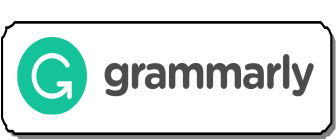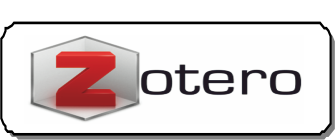Reviving The Legacy: The Role of Islamic Education in Patani, South Thailand
Abstract
Patani is a region located in the southern part of Thailand, bordering Malaysia. It has a rich and diverse cultural heritage that is deeply rooted in Islam. For centuries, the people of Patani have maintained a unique identity that reflects their Islamic faith, traditions, and way of life. One of the key pillars of this identity is the education system, which plays a vital role in preserving and transmitting the values and teachings of Islam to the younger generation. The purpose of this research is to explore the current state of Islamic education in Patani, its challenges, and its role in preserving the cultural and spiritual heritage of the region. The study aims to provide insights into the efforts being made to revive the legacy of Islamic education in Patani and the impact of these efforts on the community. This research utilizes a qualitative research method, specifically, a case study approach. Data were collected through interviews with key stakeholders in the region, including religious scholars, educators, and community leaders. Secondary sources, such as academic articles and reports, were also consulted to provide a broader context for the study. The findings of this research suggest that the traditional Islamic education system in Patani is facing numerous challenges, including the impact of modernization and globalization, the ongoing conflicts in the region, and the limited access to resources and funding. However, there are also promising developments, such as the establishment of new Islamic schools that incorporate modern subjects into their curriculum and the use of technology to enhance the learning experience. The study also highlights the important role of Islamic education in promoting peace, harmony, and understanding in the region. Overall, this research contributes to a deeper understanding of the importance of Islamic education in Patani and the challenges and opportunities facing the system. The study provides insights into the efforts being made to revive the legacy of Islamic education in the region and their potential impact on the community.
References
Aphornsuvan, Thanet. History and Politics of The Muslim in Thailand. Thammasat University, 2003.
Auliahadi, Arki. “Dinamika Perjuangan Muslim Patani (Tinjauan Historis).” FUADUNA: Jurnal Kajian Keagamaan Dan Kemasyarakatan 1, no. 1 (2017): 1–15.
Azizah, Lailiyatul, and Moch Khafidz Fuad Raya. “ISLAMIC EDUCATION LEADERSHIP IN CONFLICT STATE: CASE STUDY IN SOUTHERN THAILAND.” Jurnal Tatsqif 19, no. 1 (August 3, 2021): 1–20. https://doi.org/10.20414/jtq.v19i1.3540.
Baker, Chris, and Pasuk Phongpaichit. A History of Thailand. New York: Cambridge University Press, 2014.
Crew, el-Hujjah. “Thailand: Menelusuri Jejak Islam dan Pesantren.” Pesantren Al-Falah Temboro Karas, n.d.
Fauziah, Sifa. “Sejarah Perkembangan Pendidikan Islam Di Thailand Selatan (Patani) Pada Abad Ke XVII Sampai XX,” April 1, 2012. https://repository.uinjkt.ac.id/dspace/handle/123456789/1781.
Forbes, Andrew D. W. “Thailand’s Muslim Minorities: Assimilation, Secession, or Coexistence?” Asian Survey 22, no. 11 (October 1, 1953): 1056–73. https://doi.org/10.2307/2643979.
Harahap, Koiy Sahbudin, Khairunnas Rajab, Helmiati Helmiati, and Sawaluddin Sawaluddin. “Analysis of Islamic Educational Policy: Thailand Case Study.” Al-Tanzim: Jurnal Manajemen Pendidikan Islam 6, no. 1 (January 26, 2022): 54–64. https://doi.org/10.33650/al-tanzim.v6i1.3223.
Hassan, Abdulrasyid Bin, Muhammad Azhar Zailaini, and Ghazali Darusssalam. “PELAKSANAAN KURIKULUM DIPELAJARI DAN PEMBELAJARAN PENDIDIKAN ISLAM DI SEBUAH KOLEJ PENGAJIAN ISLAM SELATAN THAILAND.” Journal of Issue In Education 43 (2020): 1–11.
Hifza and Aslan. “Problematika Pendidikan Islam Melayu Patani Thailand.” Journal Al-Ulum 19, no. 2 (2019).
Hikmah, Naili. “Sejarah Pendidikan Di Pattani Thailand.” Makalah, Sekolah Tinggi Agama Islam Negeri Pekalongon, 2016. http://nailynikmah.blogspot.com/2016/04/sejarah-pendidikan-di-pattani-thailand.html.
Jory, Patrick. “Islam, Education and Reform in Southern Thailand: Tradition and Transformation.” The Asia Pacific Journal of Anthropology 14, no. 3 (June 1, 2013): 284–86. https://doi.org/10.1080/14442213.2013.787908.
Lee, Sung Yong. “Peacebuilding and Islamic Leadership in Southern Thailand.” Peace Review 27, no. 3 (July 3, 2015): 328–36. https://doi.org/10.1080/10402659.2015.1063376.
Liow, Joseph Chinyong, and Moch Khafidz Fuad Raya. “ISLAMIC REFORMIST MOVEMENT OF HAJI SULONG ABDUL KADIR IN ISLAMIC EDUCATION INSTITUTIONS IN THAILAND’S SOUTHERN BORDER.” Jurnal Pendidikan Islam 10, no. 2 (November 1, 2020): 1–15. https://doi.org/10.38073/jpi.v10i2.346.
Mahir, Abdulroman, Fachruddin Azmi, and Syafaruddin Syafaruddin. “MANAJEMEN FINANSIAL PENDIDIKAN ISLAM DI FATONI UNIVERSITY THAILAND.” Edukasi Islami: Jurnal Pendidikan Islam 10, no. 02 (October 10, 2022): 747–58. https://doi.org/10.30868/ei.v10i02.2537.
Marasabessy, Mikael. “Sejarah Pendidikan Islam Di Thailand.” Makalah, Darussalam Gontor, 2013. https://www.academia.edu/9849017/Sejarah_Pendidikan_Islam_Di_Thailand.
Porath, Nathan. “Muslim Schools (Pondok) In The South Of Thailand Balancing Piety On a Tightrope Of National Civility, Prejudice And Violence.” South East Asia Research 22, no. 3 (2014): 303–19.
Rahman, Rini, and Indah Muliati. “PENDIDIKAN ISLAM DI THAILAND.” Jurnal Kawakib 1, no. 1 (December 14, 2020): 23–34. https://doi.org/10.24036/kwkib.v1i1.10.
Raihani, Promadi Karim, Sopyan M. Asyari, and Nunu Mahnun. “Delivering Islamic Studies And Teaching Diversity In Southern Thai Islamic Schools.” Al-Jami’ah 54, no. 1 (2016): 123–46.
Rasid, Ruslan, Abdul Munip, and Hilman Djafar. “Transformasi Sistem Lembaga Pendidikan Islam Di Patani-Thailand Selatan.” Nazhruna: Jurnal Pendidikan Islam 2, no. 3 (November 20, 2019): 407–20. https://doi.org/10.31538/nzh.v2i3.1100.
Roff, William R. “Pondoks, Madrasahs, and the Production of Ulama in Malaysia.” Studia Islamika 11, no. 1 (2004): 1–21.
Rusli, Rusli. “ISLAM DI THAILAND.” Khazanah: Jurnal Sejarah Dan Kebudayaan Islam, December 23, 2017, 41–56. https://doi.org/10.15548/khazanah.v0i0.60.
Saah, Tohiroh. “Pendidikan Islam Di Patani Selatan Thailand Dalam Perspektif Historis.” Skripsi tidak diterbitkan, Islam Negeri Raden Intan, 2017.
Susanto, Pendi. “Perbandingan Pendidikan Islam Di Asia Tenggara.” Jurnal Pendidikan Islam 4, no. 1 (June 1, 2015): 71–93. https://doi.org/10.14421/jpi.2015.41.71-93.
Syakhrani, Abdul Wahab. “PENDIDIKAN AGAMA ISLAM DI THAILAND.” ADIBA : JOURNAL OF EDUCATION 2, no. 1 (March 13, 2022): 74–79.
Wekke, Ismail Suardi, Muhammad Ashrori, and Budianto Hamuddin. “Institutional Transformation Of Madrasa Of Muslim Minority In Thailand.” Jurnal Pendidikan Islam 4, no. 1 (2018): 15–26.
Wekke, Ismail Suardi, Siddin Siddin, and Sukree Langputeh. “Islamic Education in Thailand Pattani Muslim Minority: What Are the Institutional Continuity and Change?” Tadris: Jurnal Keguruan Dan Ilmu Tarbiyah 4, no. 1 (June 28, 2019): 127–34. https://doi.org/10.24042/tadris.v4i1.3753.
Yuniarto, Paulus Rudolf. “Minoritas Muslim Thailland Asimilasi, Perlawanan Budaya Dan Akar Gerakan Separatisme.” Jurnal Masyarakat Dan Budaya 7, no. 1 (2005): 89–118.
Copyright (c) 2023 Fatonah Salaeh

This work is licensed under a Creative Commons Attribution-ShareAlike 4.0 International License.
Please find the rights and licenses in SYAMIL Jurnal Pendidikan Agama Islam (Journal of Islamic Education). By submitting the article/manuscript of the article, the author(s) agree with this policy. No specific document sign-off is required.
1. License
The non-commercial use of the article will be governed by the Creative Commons Attribution license as currently displayed on Creative Commons Attribution-ShareAlike 4.0 International License.
2. Author(s)' Warranties
The author warrants that the article is original, written by stated author(s), has not been published before, contains no unlawful statements, does not infringe the rights of others, is subject to copyright that is vested exclusively in the author and free of any third party rights, and that any necessary written permissions to quote from other sources have been obtained by the author(s).
3. User/Public Rights
SYAMIL spirit is to disseminate articles published are as free as possible. Under the Creative Commons license, SYAMIL permits users to copy, distribute, display, and perform the work for non-commercial purposes only. Users will also need to attribute authors and Register on distributing works in the journal and other media of publications. Unless otherwise stated, the authors are public entities as soon as their articles got published.
4. Rights of Authors
Authors retain all their rights to the published works, such as (but not limited to) the following rights;
Copyright and other proprietary rights relating to the article, such as patent rights,
The right to use the substance of the article in own future works, including lectures and books,
The right to reproduce the article for own purposes,
The right to self-archive the article (please read out deposit policy),
The right to enter into separate, additional contractual arrangements for the non-exclusive distribution of the article's published version (e.g., post it to an institutional repository or publish it in a book), with an acknowledgment of its initial publication in this journal (SYAMIL Jurnal Pendidikan Agama Islam (Journal of Islamic Education)).
5. Co-Authorship
If the article was jointly prepared by more than one author, any authors submitting the manuscript warrants that he/she has been authorized by all co-authors to be agreed on this copyright and license notice (agreement) on their behalf, and agrees to inform his/her co-authors of the terms of this policy. SYAMIL will not be held liable for anything that may arise due to the author(s) internal dispute. SYAMIL will only communicate with the corresponding author.
6. Royalties
Being an open accessed journal and disseminating articles for free under the Creative Commons license term mentioned, author(s) aware that SYAMIL entitles the author(s) to no royalties or other fees.
7. Miscellaneous
SYAMIL will publish the article (or have it published) in the journal if the article’s editorial process is successfully completed. SYAMIL editors may modify the article to a style of punctuation, spelling, capitalization, referencing and usage that deems appropriate. The author acknowledges that the article may be published so that it will be publicly accessible and such access will be free of charge for the readers as mentioned in point 3.












